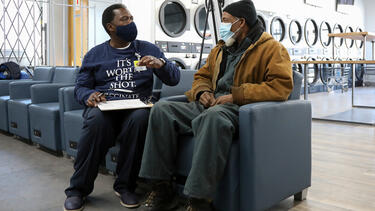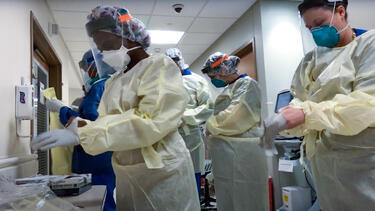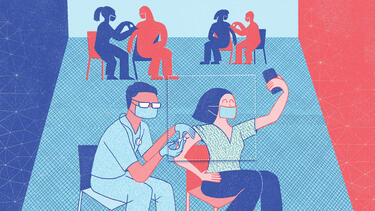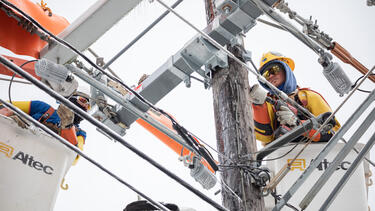Alumni
A Diversified Portfolio of Climate Solutions
We talked to Dean Takahashi ’83, founder and executive director of the Carbon Containment Lab, a nonprofit helping to develop multiple high-quality, undervalued climate innovations.

We Need to Acknowledge the Problem of Senior Poverty
Joe Seldner ’84, founder of the Senior Poverty Prevention Project, calls for problem solvers to take on an issue getting little attention.

The Fight for Healthcare Equity after COVID-19
Dr. Cecelia Calhoun ’21, a Yale physician with a focus on sickle cell disease, and Yale SOM’s Dr. Howard Forman discuss the gargantuan but critical challenge of addressing the impact of systemic racism on the health of Black Americans.

Video: Identifying with a Team Helps Prevent Stress and Burnout among Healthcare Workers
A Yale study conducted in the early days of the COVID-19 pandemic found that feeling like part of a team reduced reported stress and burnout—an insight with implications for how any kind of organization can weather a crisis.

What Does It Take to Create Financial Products That Can Save the Planet?
Investors are increasingly eager to contribute to solutions for climate change and other environmental problems. Charlotte Kaiser ’07 of The Nature Conservancy’s NatureVest explains how the company builds financial products that attract mainstream capital while delivering conservation impacts.

How Trust Can Power Renewable Energy
Lily Donge ’97 talked with us about how building trust is critical for any kind of real innovation—and how it’s helped her develop new models for scaling renewable energy.

How Balancing Creativity and Rigor Helped Disney Build a Star Wars Vacation Experience
Architect Ann Morrow Johnson ’14 is the executive producer and executive creative director for Walt Disney Imagineering’s immersive vacation experience Star Wars: Galactic Starcruiser. We talked with her about balancing innovative creativity and strategic rigor.

How Connecticut Accelerated Its Vaccinations
Josh Geballe ’02, Connecticut’s chief operating officer, explains the state’s controversial decision to switch to age-based eligibility for COVID vaccines—and says it likely saved lives.

California’s Path to a Carbon-Neutral Grid
Elliot Mainzer ’98, CEO of CAISO, explains how California is working to avoid another summer of blackouts even as the state transitions to a carbon-neutral grid.

Why the Texas Power Market Failed
Texas-based energy economist Ed Hirs ’81 says the February 2021 power crisis exposed longstanding, fatal flaws in the state’s energy market design and oversight.

To Reduce Risk, Build Trust, in Developing Countries and the U.S.
Mena Cammett ’12 of the World Bank says that the tools used to analyze risk in emerging markets are increasingly relevant to the United States. To mitigate vulnerabilities, build trust.
